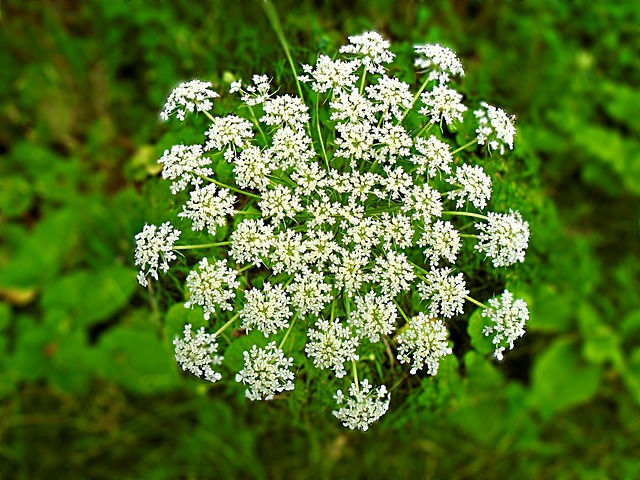
Hemlock is a growing concern for landowners and residents across the UK. We’ve put together this handy guide to getting rid of the poisonous plant.
What is hemlock?
Hemlock (Conium maculatum) is a dangerous plant found in the UK. The weed can grow up to eight feet and can be identified by its clustered white flowers. You’ll also notice deep red/purple markings all over the main stem and a musty odour when the plant is disturbed.
How do I get rid of hemlock?
Hemlock removal is a dangerous task, particularly if you aren’t a professional. We always recommend speaking to a weed removal specialist before attempting to remove hemlock yourself.
Fully matured hemlock can be physically removed by digging it up from the root. Alternatively, hemlock seedlings and small rosettes can be chemically controlled using herbicides.
However, hemlock removal can be an ongoing chore if it is not done properly the first time, and digging out the plant yourself can pose a number of problems and future issues.
For example, if the taproot is not fully removed, regrowth is likely. Hemlock is also harmful to humans, so attempting to remove it yourself puts you at risk. Disposing of the poisonous weed is difficult too.
How to safely remove and dispose of hemlock
NOTE: Hemlock is a poisonous plant that can be very harmful if mishandled. We strongly recommend calling a weed control specialist instead of attempting to get rid of hemlock yourself. The steps below are for informational purposes only and Total Weed Control accepts no responsibility for any harm caused.
- Before handling, make sure you’re wearing protective clothing, especially a good pair of gloves.
- Dig out the plant, making sure to fully remove the taproot. Depending on its size you could pull it out using your hands or using a garden shovel or spade.
- Alternatively, if the hemlock has not fully matured, herbicides can be used.
- Once removed/treated, wash your hands thoroughly using soap.
Toxic plant waste can still be dangerous once removed, if not properly destroyed. Hemlock cannot be burned as this may release toxins into the air for humans and livestock to potentially breath in.
Government advice suggests that using a registered waste carrier is the safest way to dispose of harmful weeds like hemlock.
Fortunately, at Total Weed Control, we can do the hard work for you. If you’re concerned about hemlock near your property, get in touch and we can create an effective weed control plan that suits you.
Why is hemlock so bad?
Hemlock can take over large patches of land if not controlled. Waste areas and waterlogged soil are particularly vulnerable, though there have been cases of hemlock seen growing in gardens as well.
It’s also dangerous to humans and livestock, as it can be toxic if ingested. All parts of the plant are a risk, but the seeds and roots are especially lethal. Poisoning may also occur if the pollen is inhaled.
Symptoms of hemlock poisoning in humans:
- excessive salivation
- muscle pain
- trembling
- abnormal heart rate
Is hemlock poisonous if you just touch it?
No, but handling the plant can cause contact dermatitis, a red, itchy rash.
Is hemlock poisonous to dogs?
Yes. Hemlock can poison dogs if ingested. Symptoms include:
- excessive drooling
- frothing at the mouth
- vomiting
- rolling eyes
What is the difference between hemlock and hemlock water-dropwort?
Much like hemlock, hemlock water-dropwort (Oenanthe crocata) is very poisonous. However, it is far less likely to grow in your back garden. You’ll probably come across it in ponds, wet woodlands and other shallow bodies of water. This means that hemlock water-dropwort is more of a danger to animals than humans.
Contact Us
READ MORE: The UK's Most Dangerous Plants
